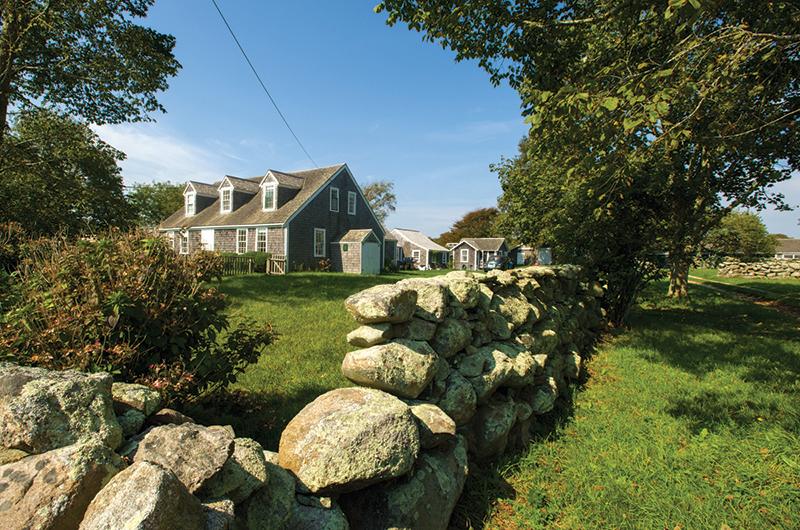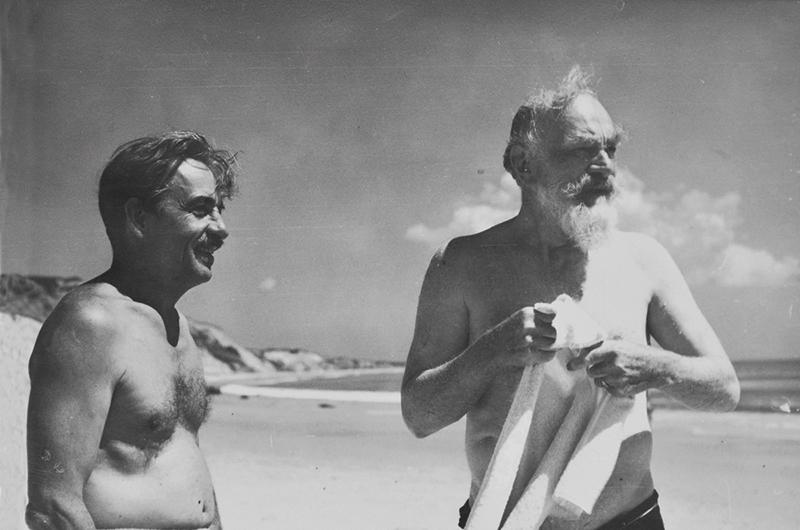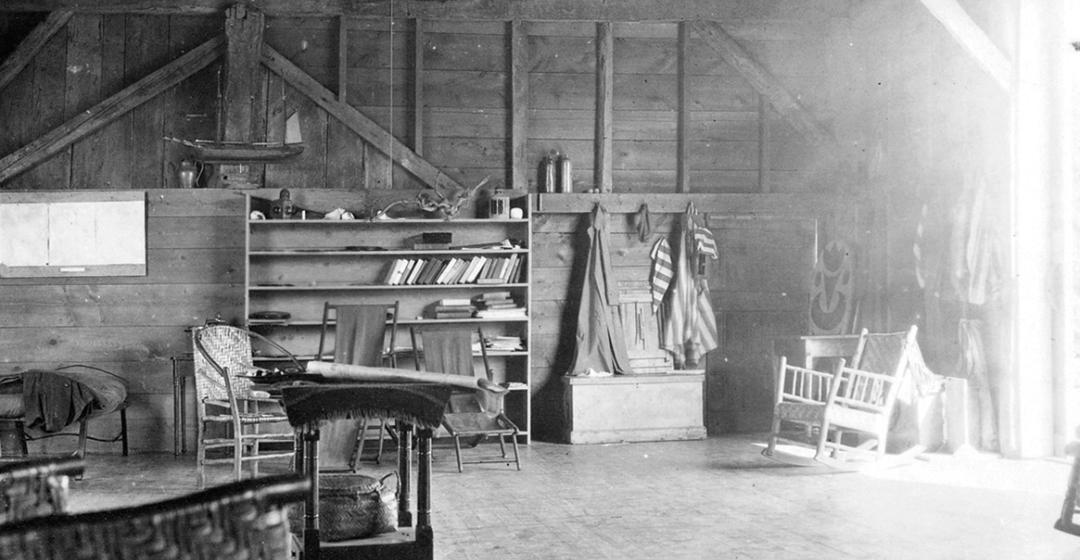For nearly 100 years, an old farm off South Road in Chilmark has served as a summer refuge and creative wellspring for an unusual community of artists, writers, intellectuals, and social activists. Last year Barn House, which dates from 1690, earned a spot on the National Register of Historic Places, the first Chilmark site to achieve that honor.
The property has been a collective since 1919, when the founding members purchased it and adopted an unembellished lifestyle that continues to be embraced by today’s members. Early visitors (not members) included painter Thomas Hart Benton, journalist Walter Lippmann, politician Norman Thomas, Supreme Court Justice Felix Frankfurter, and ACLU founder Roger Baldwin (an honorary member), though current members are quick to point out that celebrity has never been a focus of the longtime colony.
“Other types have always been on the scene,” says current Barn House summer resident John Herzan, a Connecticut-based architectural historian, who, with his wife, Lauren Brown, initiated the application for National Register status. “The common thread through the century has been the enjoyment and appreciation of the beauty of the Island and its many recreational opportunities. In that sense we’re not very different from most Island visitors.”

The sprawling 43-acre property includes the Skiff-Mayhew-Vincent house, thought to be the oldest house in Chilmark still located on its original site; the barn, dating from about 1786; and outbuildings scattered around former sheep pastures punctuated by handsome stone walls.
In the early days, Barn House – never prefaced by “the” – was described as “that hangout for radicals,” because of its unusual format and the liberal politics of a few members. Today, Barn House families maintain the community’s long-established traditions. A designated chore master assigns tasks ranging from weeding to building repair, with some work done by paid employees – known as chore boys or girls – and a cook who prepares shared meals. Evening entertainments include lively discussions, card games, and theatricals. Electricity arrived in the sixties, Internet access last year.
The Skiff-Mayhew-Vincent house has five bedrooms, but most of the twenty member families stay in nine little cabins, called coops, dotted around the property. The name comes from the original chicken coop that provided shelter for artist and founding member Boardman Robinson and his wife, Sally. Each of the subsequent coops is named for the family who either built or frequently summered in it, their construction dating back to 1920, with the most recent built in 2001.

The current membership prefers to preserve its privacy, but retired Episcopal minister Alden Besse of Vineyard Haven, now a chaplain at the Martha’s Vineyard Hospital and Windemere Nursing and Rehabilitation Center, grew up spending summers at Barn House and recalls some “grand old times” there as a child. In his day, Barn House coops had no heat or running water, and Reverend Besse recalls lying in bed listening to the whippoorwills, mourning doves, and bobwhites. Friendships that developed at Barn House lasted. Reverend Besse remembers bumping into Amos Hopkins, with whom he’d summered, on a train from Boston to the Vineyard. When they discovered they were both going to attend Harvard University that fall, the two decided then and there to become roommates. In 1931, Reverend Besse’s parents moved down-Island to Vineyard Haven. Some years later they gave up their Barn House membership, although the family would continue to make visits to the property for generations.
Through the years he has never ceased to appreciate Barn House’s bucolic way of life, far away from the temptation of movies, game arcades, and other hurly-burly attractions of down-Island, a throwback to a simpler time in the Island’s history.





